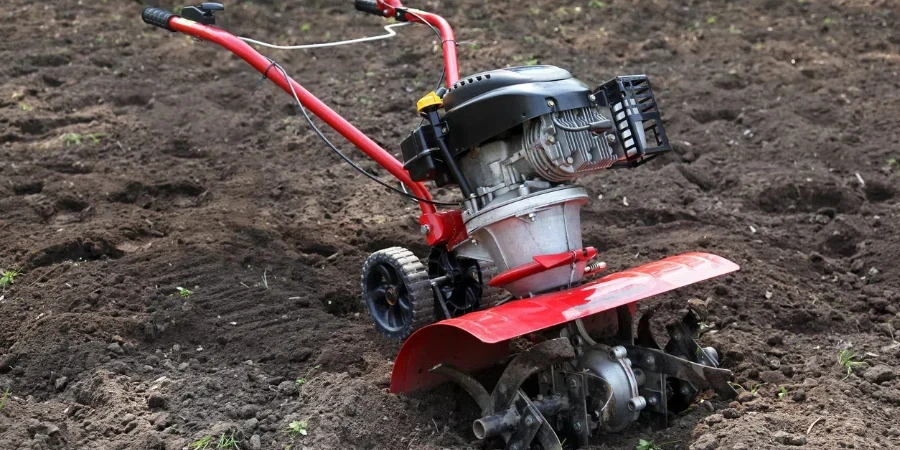Selecting the best hand tiller can significantly impact your inventory’s success. In 2025, the market is propelled by innovations and eco-friendly trends. This article covers performance, ease of use, safety, durability, and the latest technological advancements, providing professional buyers with essential insights to make well-informed decisions.
Table of Contents:
– Market Overview of Hand Tillers
– In-Depth Analysis and Market Dynamics
– Key Factors When Selecting a Hand Tiller
– Latest Technological Advancements in Hand Tillers
– Maintenance and Care for Longevity
– A Comprehensive Guide to Hand Tiller Accessories
– Evaluating the Resale Value and Lifespan of Hand Tillers
– Final Thoughts
Market Overview of Hand Tillers
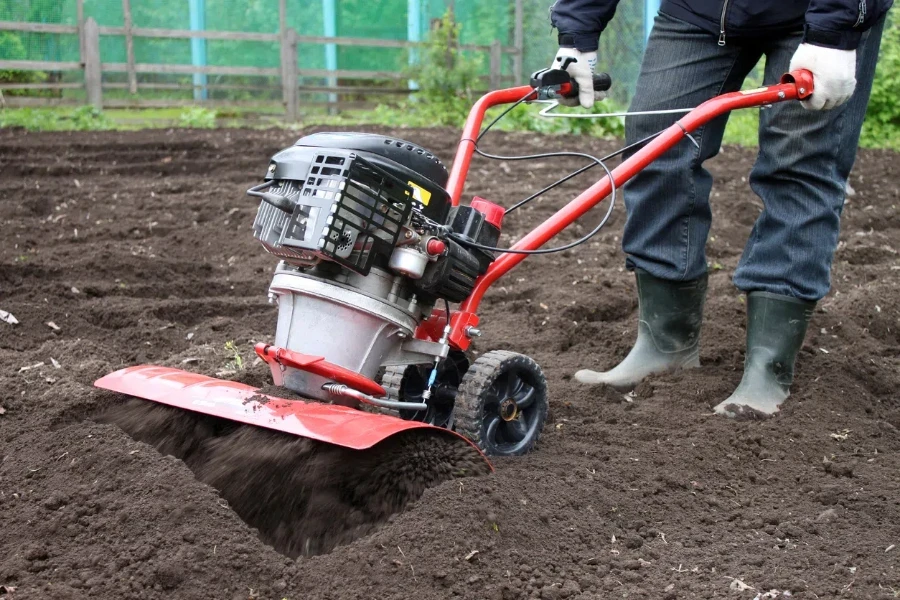
The global hand tiller market has shown significant growth and is expected to continue this trend. As of 2024, the market size was valued at approximately USD 3.02 billion and is projected to reach USD 4.33 billion by 2030, growing at a compound annual growth rate (CAGR) of 6.16%. This growth is due to the increasing adoption of mechanized farming, the emphasis on sustainable agriculture, and the need for efficient soil management equipment.
Regionally, the Asia-Pacific region, particularly China and India, has emerged as a significant market due to high demand for agricultural productivity and a substantial rural farming populace. The U.S. market is also notable, valued at USD 633.5 million in 2023, and is expected to maintain steady growth. Europe follows closely, driven by stringent emissions regulations and a strong focus on sustainable farming practices.
Market segmentation reveals a diverse range of products, including front tine tillers, mini-cultivators, and rear tine tillers. Each segment caters to different tilling needs and soil conditions. Front tine tillers are popular for smaller gardens and lighter soils, while rear tine tillers are favored for their robustness and ability to handle larger areas with tougher soil.
In-Depth Analysis and Market Dynamics
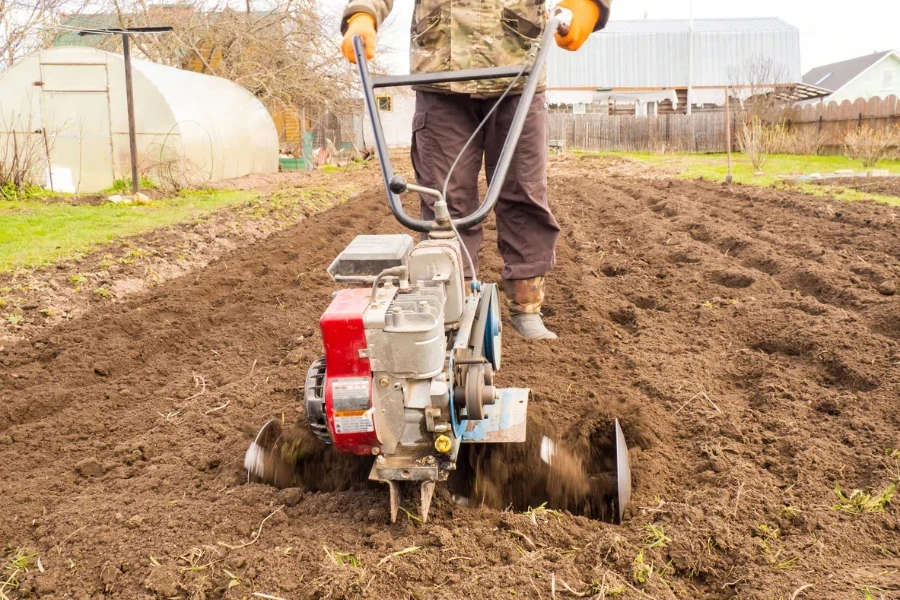
Several key performance benchmarks and market share dynamics characterize the hand tiller market. Leading vendors such as Honda Motor Co., Ltd., Kubota Corporation, and Husqvarna AB dominate with innovative products and strong brand presence. These companies have invested significantly in research and development to enhance product efficiency and durability, capturing a substantial market share.
Recent innovations include adjustable blades, tine configurations, and advanced power take-off (PTO) technology, significantly improving the operational efficiency of hand tillers. These advancements have reduced fuel consumption and increased productivity, making them appealing to both commercial and private users. The integration of digital technologies like GPS and remote sensing in modern tillers is expected to drive future growth by enabling more precise and efficient soil management.
Consumer behavior has shifted towards eco-friendly and versatile tillers, driven by the trend of organic gardening and sustainable agricultural practices. This shift has increased demand for lightweight, easy-to-handle hand tillers that maintain soil health without chemical fertilizers.
Distribution channels have evolved with the rise of e-commerce platforms, offering a wide range of products and convenient purchasing options. However, traditional retail channels such as specialty stores and agricultural equipment dealers remain significant, especially in regions with less access to online shopping.
The product lifecycle of hand tillers has extended due to durable materials and innovative designs that reduce maintenance costs and prolong equipment usability. The rising interest in home food production and self-sustainability has further bolstered market growth.
Key Factors When Selecting a Hand Tiller
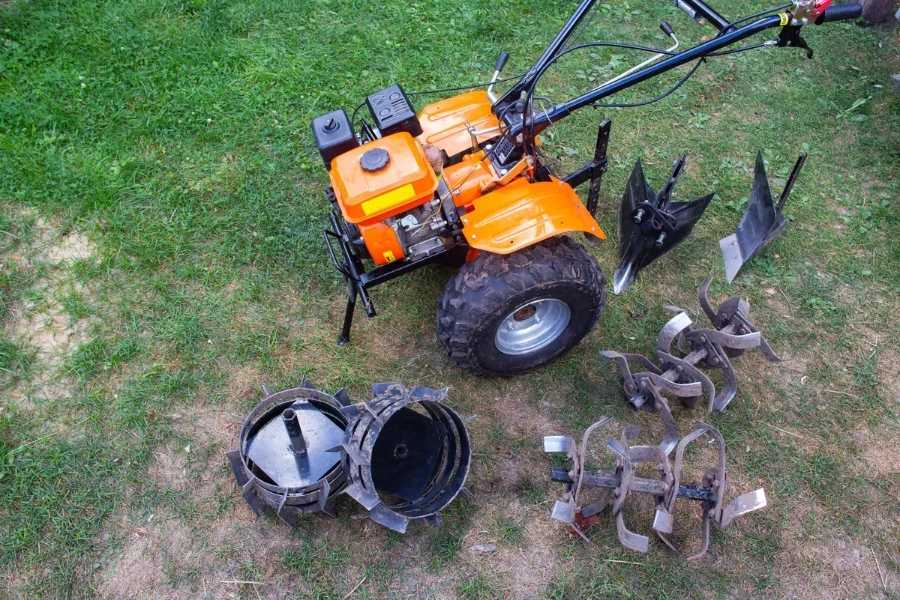
Choosing the right hand tiller is crucial for efficient soil preparation and gardening tasks. Factors such as performance, ease of use, safety, and durability play significant roles in making an informed decision. Below, we delve into the critical aspects to consider when selecting a hand tiller.
Performance Capabilities
The performance of a hand tiller largely depends on its engine power, tine configuration, and tilling width. A robust engine, typically ranging from 1 to 3 horsepower, handles denser soils and larger gardens more effectively. For instance, a 2.5 hp engine can break through compacted soil layers and incorporate organic matter efficiently.
The tine configuration also impacts performance. Dual-rotating tines, which can rotate both forward and backward, offer versatility for different soil conditions. Forward-rotating tines are ideal for breaking new ground, while counter-rotating tines help with deeper tilling and mixing. The tilling width, varying from 6 to 18 inches, determines the area covered in a single pass, making wider tillers suitable for larger plots.
Ease of Use
Ease of use is influenced by the tiller’s weight, handle design, and maneuverability. Lightweight tillers, typically under 25 pounds, are easier to handle, especially for extended periods. Ergonomic handles with adjustable heights and cushioned grips enhance comfort and reduce operator fatigue.
Maneuverability is essential for navigating tight spaces and around garden beds. Models with swivel wheels or adjustable depth stakes provide better control and stability. Features like quick-start mechanisms and easily accessible controls simplify operation, making the tiller user-friendly for both novice and experienced gardeners.
Safety Features
Safety is paramount when using machinery, and hand tillers are no exception. Key safety features include blade guards, which prevent debris from being thrown towards the operator, and automatic shut-off mechanisms that stop the engine if the tiller is accidentally released. Some models also come with protective shields around the tines to minimize the risk of injury.
Compliance with safety standards such as ISO 11148-3 for handheld, non-electric drills, and IEC 60745-2-1 for handheld, electric drills, ensures that the tiller meets stringent safety requirements. Manufacturers often provide detailed guidelines and safety instructions to further enhance user safety.
Durability and Build Quality
Durability and build quality are determined by the materials used in the construction of the hand tiller. High-quality steel tines and reinforced aluminum or steel frames offer longevity and resistance to wear and tear. Stainless steel components are particularly beneficial for their corrosion resistance, especially when working in moist or acidic soils.
The build quality is reflected in the tiller’s warranty period, with premium models offering warranties of up to 5 years. This indicates the manufacturer’s confidence in the product’s durability and reliability. Regular maintenance, such as cleaning and lubricating moving parts, can further extend the tiller’s lifespan.
Price Range and Budget
The price range of hand tillers varies significantly based on features, brand, and build quality. Entry-level models start at around $100, offering basic functionality suitable for small gardens and light tilling tasks. Mid-range tillers, priced between $200 to $400, provide enhanced power and additional features such as adjustable tines and ergonomic designs.
High-end models, which can cost upwards of $600, offer advanced features like dual-rotating tines, electric start, and superior build quality. While budget considerations are important, investing in a higher-quality tiller can result in better performance, durability, and overall satisfaction.
Latest Technological Advancements in Hand Tillers
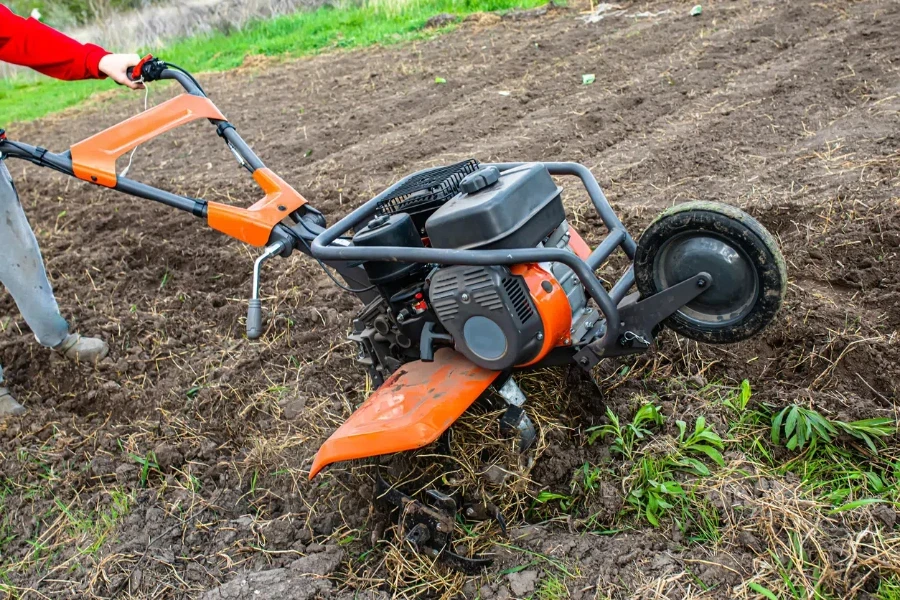
The hand tiller industry has seen significant technological advancements aimed at improving efficiency, ease of use, and safety. Innovations such as electric tillers, battery-powered models, and smart features are transforming the way gardeners approach soil preparation.
Electric and Battery-Powered Tillers
Electric and battery-powered tillers are gaining popularity due to their environmental benefits and ease of use. These models eliminate the need for fuel, reducing emissions and operational costs. Advanced lithium-ion batteries provide longer run times and quicker charging, making them suitable for extended gardening sessions.
Electric tillers are also quieter, producing less noise pollution, which is beneficial for residential areas. The absence of fuel and oil also simplifies maintenance, making electric and battery-powered tillers a convenient choice for modern gardeners.
Smart Features and Connectivity
Smart features and connectivity options are becoming more common in hand tillers, providing users with enhanced control and monitoring capabilities. Some models come equipped with Bluetooth or Wi-Fi connectivity, allowing users to monitor performance metrics and receive maintenance alerts via smartphone apps.
These smart tillers can adjust tilling depth and speed based on soil conditions, optimizing performance and efficiency. Additionally, GPS tracking and theft prevention features offer added security, ensuring that the tiller remains safe and accounted for.
Ergonomic and User-Friendly Designs
Ergonomic and user-friendly designs are a major focus in the latest hand tillers. Adjustable handles, cushioned grips, and lightweight materials improve comfort and reduce strain during operation. Some models feature foldable designs for easy storage and transport, making them ideal for gardeners with limited space.
Quick-start mechanisms and intuitive controls simplify operation, allowing users to start and stop the tiller with minimal effort. These design enhancements make hand tillers more accessible and enjoyable to use, catering to a wider range of users.
Maintenance and Care for Longevity
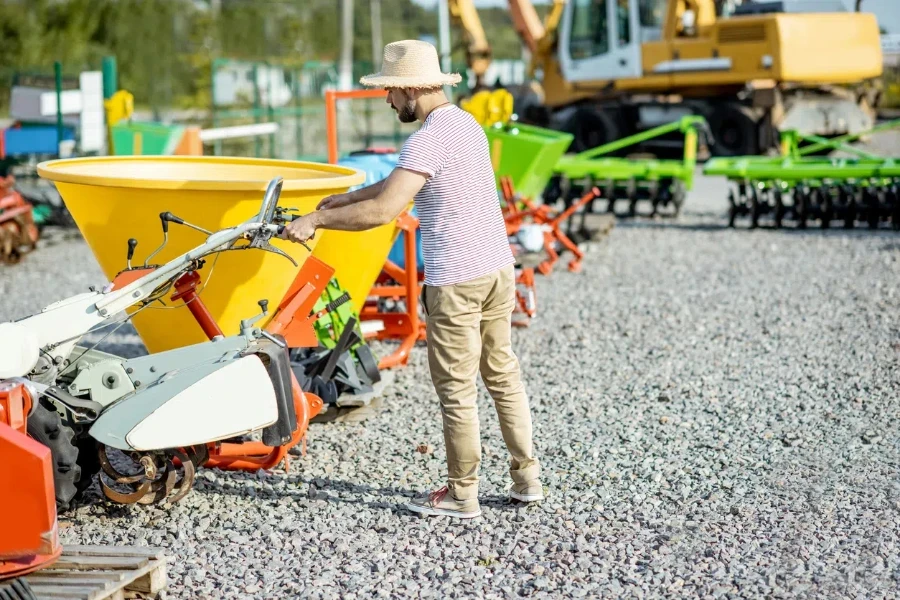
Proper maintenance and care are essential for ensuring the longevity and optimal performance of hand tillers. Regular cleaning, lubrication, and inspection of components can prevent wear and tear, extending the tiller’s lifespan.
Cleaning and Lubrication
Cleaning the tiller after each use is crucial to prevent soil and debris from accumulating on the tines and frame. Using a hose or pressure washer can effectively remove dirt and grime. Lubricating moving parts, such as the tines and wheels, with appropriate lubricants reduces friction and wear, ensuring smooth operation.
Inspection and Replacement of Parts
Regular inspection of the tiller’s components is necessary to identify any signs of damage or wear. Checking the tines for sharpness and replacing them if they become dull or damaged is important for maintaining efficiency. Inspecting the engine, fuel lines, and electrical connections for any issues can prevent breakdowns and ensure reliable performance.
Storage and Protection
Proper storage and protection of the tiller during the off-season are essential to prevent damage and deterioration. Storing the tiller in a dry, sheltered area and covering it with a protective cover can prevent rust and corrosion. Additionally, draining the fuel and oil before storage can prevent engine issues when the tiller is used again.
A Comprehensive Guide to Hand Tiller Accessories
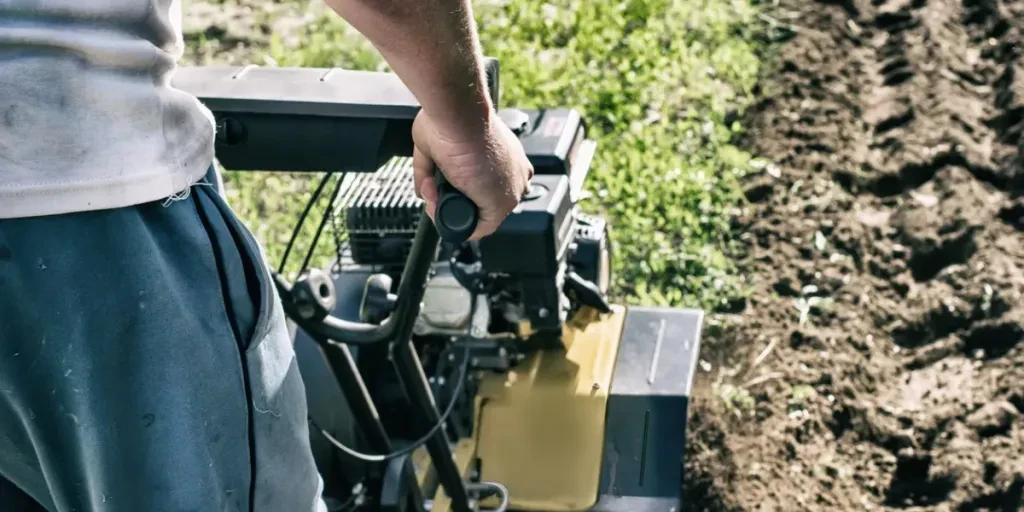
Hand tiller accessories can enhance the functionality and versatility of the tiller, allowing users to tackle a wider range of gardening tasks. From tine attachments to protective gear, various accessories can improve performance and safety.
Tine Attachments
Tine attachments are available in various configurations to suit different soil conditions and gardening tasks. For instance, narrow tines are ideal for precision tilling in tight spaces, while wider tines cover larger areas more efficiently. Some models also offer interchangeable tines for different soil types, such as clay, sandy, or loamy soils.
Protective Gear
Wearing appropriate protective gear is essential for ensuring safety while operating a hand tiller. Safety goggles, gloves, and sturdy footwear can protect against debris and accidental injuries. Additionally, ear protection can reduce the risk of hearing damage from prolonged exposure to engine noise.
Maintenance Kits
Maintenance kits, which include essential tools and replacement parts, can simplify the upkeep of the hand tiller. These kits often contain items such as spark plugs, air filters, and lubricants, providing everything needed for regular maintenance. Having a maintenance kit on hand can ensure that the tiller remains in optimal condition and ready for use.
Evaluating the Resale Value and Lifespan of Hand Tillers
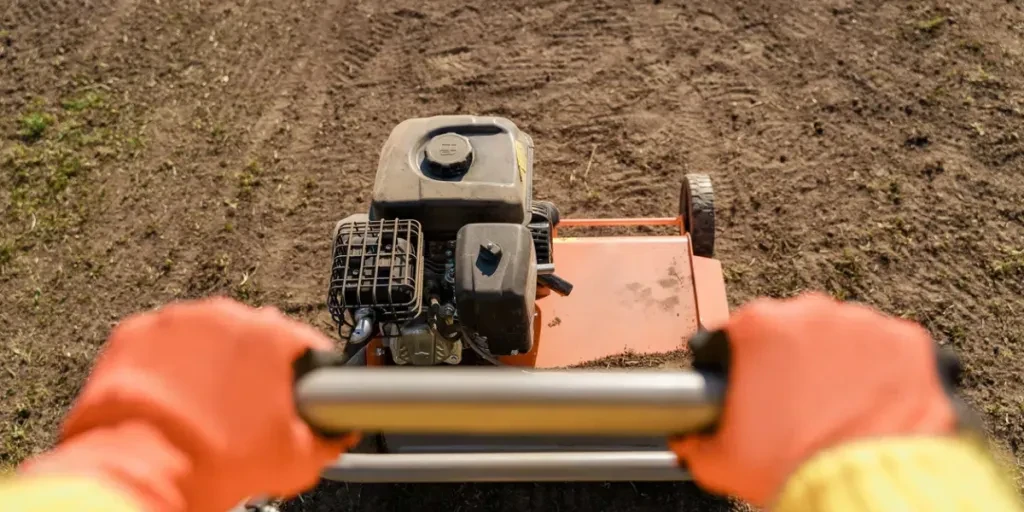
The resale value and lifespan of hand tillers are important considerations for users looking to invest in a reliable and durable tool. Factors such as build quality, brand reputation, and proper maintenance can influence the tiller’s longevity and resale potential.
Build Quality and Brand Reputation
Hand tillers from reputable brands with a history of quality and reliability often have higher resale values. Brands that use high-quality materials and advanced manufacturing processes produce tillers that can withstand prolonged use and harsh conditions. Investing in a well-known brand can provide peace of mind and better resale prospects.
Proper Maintenance and Care
Proper maintenance and care significantly impact the tiller’s lifespan and resale value. Regular cleaning, lubrication, and inspection of components can prevent wear and tear, ensuring that the tiller remains in good condition. Keeping detailed maintenance records can also enhance the tiller’s resale value, as potential buyers will have confidence in the tool’s upkeep.
Market Demand and Trends
Market demand and trends can influence the resale value of hand tillers. As the popularity of gardening and sustainable living continues to grow, the demand for high-quality tillers is expected to increase. Staying informed about market trends and advancements in tiller technology can help users make informed decisions about when to sell or upgrade their tillers.
Final Thoughts
Selecting the right hand tiller involves considering various factors such as performance, ease of use, safety, durability, and price. By understanding the latest technological advancements, maintaining the tiller properly, and evaluating its resale potential, users can make an informed decision and enjoy the benefits of a reliable and efficient gardening tool.
